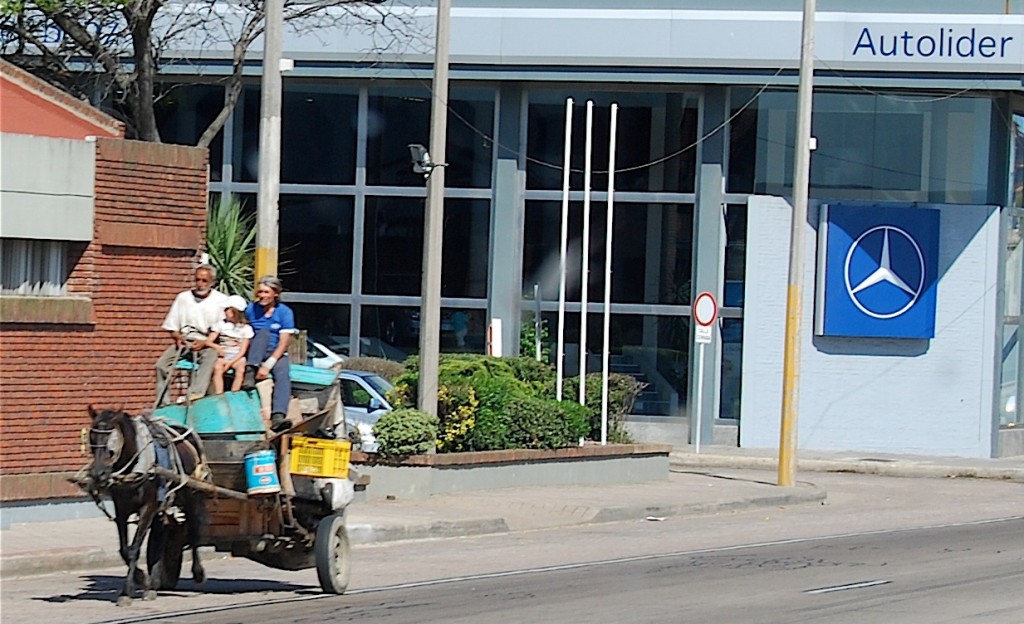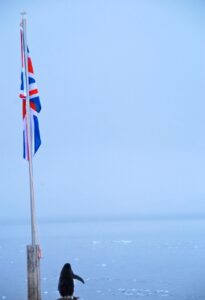Photography 101
So here you are, getting ready to fly off on that dream vacation. You’ll pack that new digital camera and when you get there you’ll take some pictures. But maybe they won’t turn out as good as you hoped. Heads cut off, over exposed, under exposed, why did I even take that one? Oh well, only pro’s with expensive equipment can take good pictures. NOT!
For the past thirty years I’ve roamed the planet taking pictures. I must have clicked that shutter 100,000 times. Here, in a nutshell, is what I’ve learned from experience and from the professionals I’ve encountered along the way. Read on. I assure you that even with that little point and shoot you too can take great pictures. Even a few of those “wow” pictures you see in magazines.
CHOOSE YOUR CAMERA.
Size matters. But in this case smaller is usually better. Pick a camera that’s small enough that you’ll actually take it with you. One that fits in a shirt pocket or purse. Even though I have a big expensive Nikon I always take my little “point and shoot.” In some situations the “point and shoot” actually takes better pictures. The top selling small camera in the world today? Probably the I Phone. And unlike your regular camera, it will email or text the picture. Oh, and it actually makes phone calls!
Most inexpensive digital cameras take excellent pictures. Avoid the big box stores. The kid with parrot colored hair and tattoos barely knows where the cameras are located. They’re hard to find but find a good camera store. They will pick the right camera, teach you how to use it, and give you service after the sale.
The more megapixals the more detail in the picture. Mega pixels, however, take up storage chip space. So buy a chip for your camera that is at least 64 GB. 128 would be even better. Memory chips have gotten very inexpensive so don’t try and save money on the chip. I prefer the SanDisk Ultra They capture the image quickly and are much faster on the download to your computer.
MEMORY FULL
Ok, you’re out on your trip and you’ve taken so many pictures you get a message that says, “memory full” and you can’t take any more pictures. Don’t panic. Most of the pictures on the chip are no good anyway so review them and delete the duds. Now your chip is ready to go again.
CAMERA BAGS.
Maybe a cheap little generic gizmo that can be clipped to your belt or waistband. Or better yet just keep the camera in pocket or purse. Yes, the camera will get scratched and dinged up a bit. So what. Don’t waste your time fumbling through a “never ready” camera bag. The idea is to have it ready at an instants notice when the picture appears. Remember, the cost of getting there to take the pictures was lot more than the cost of the camera.
CAMERAS
Let’s face it. Cell phones now have as good as or better cameras than many larger more expensive cameras. But the cell phone came has limits. The big cameras have a much bigger and better lens, and more options in shooting pictures. The bigger camera with the bigger lens simply takes a bigger better picture. And they make you look like a real photographer.
Don’t buy a fancy expensive camera bag. It’s an advertisement that the camera bag contains a fancy expensive camera. It begs to be stolen. Not only is your camera never at the ready, they are an open invitation to thieves. If you’re out in the field keep the camera strapped around your neck and ready to shoot.
But bigger isnt always better. You can take excellent pictures with your cell phone and its’ always there and ready. Better to get a good shot with your cell phone than no shot with your Nikon.
I spotted this scene through the window of a moving tour bus in Montevideo. I had 2 seconds to snap the shot.

LENS COVERS
Don’t use one. Instead buy an inexpensive ’skylight’ or ‘uv’ lens cover that screws onto the lens itself. It it gets scratched just replace it. Yes, the camera will get scratched and dinged. Now you will indeed look like a REAL photographer!
My choice? Well, Nikons are hard to beat but pick a brand that you like and is easy to handle. Too many bells and whistles will simple make the camera confusing and hard to use. Price will go up a lot if the camera has lots of built in editing features and other gizmos. To me this is a waste of money as you’re really going to do editing and storage on your computer, not on the camera itself. The cameras job is really just to capture the image.
MONEY, MONEY, MONEY.
A good SLR Nikon could be $1000. A good Nikor multi-purpose lens will cost more than the camera. I would avoid Best Buy and other electronic stores. Chances are you’ll get some young clerk with parrot colored hair, three body piercings (and maybe a fourth you can’t see) who may not even know where the cameras are located. Most specialty camera stores are very competitive on price and they know the ins and outs of the cameras they sell. It’s worth a few extra bucks to deal with somebody who really knows their photography. Also, they’ll provide excellent and ongoing service after the sale. Some may even have free photography lessons or workshops.
PICTURE EDITING
Windows Photo Shop? It stinks. Most of the really cool editing is done on a Mac. However, windows does have one program, comes with xp I think, which is very good. It’s Microsoft Office Picture Manager. It will crop, resize (that size thing again) brighten or darken, etc. Another good one is Picasa. And I think the download is free. But remember–get too fancy and it ends up not being the picture you took.
PRACTICE
Before you go on that big trip familiarize yourself with your camera. Take lots of pictures. Get used to how it works so you can quickly shoot that memorable shot, or the “wow” shot as the pros like to call it.
Hell, you might even read the manual. (Sorry “real men.” I know real men don’t ever read manuals. That’s why my basement is full of stuff I never figured out how to assemble.)
TAKING GREAT PICTURE.
Now its time for you to do your part. Take the picture. But to take the picture you have to be where there is great scenery or action. This is where the travel stuff comes in. The fun part of taking a great picture is being there to take it.
LOOK FOR THE PICTURE
When you see it, since the camera isn’t stuffed in an expensive bag, you can instantly take the picture. (And since you don’t have to remove the lens cap you won’t miss the shot and then hear some wise ass say, “Aren’t you supposed to remove the lens cap?”
Another example of a split second shot.
SEE THE PICTURE.
For the most part if you put the camera on automatic or program it will take a properly exposed and focused picture. Your job is to first SEE the picture. Normally you SEE the picture BEFORE you put the camera up to your eye. Once you’re looking through the viewfinder or at the camera screen your field of view is very small. So first SEE the picture. Then frame the picture so as to take advantage of light and subject. Frame the picture to look like the picture you SEE. Hold steady… click the shutter.
Here’s an example of SEE the picture. Look at the two pictures below. Both taken within seconds of each other and both taken standing in nearly the same spot at an Antarctic research station. But one, the lone penguin standing as if to salute the flag, is THE picture. The other is just a picture of a bunch of penguins.
LIGHT
Photography is all about light. Light is either your friend or your enemy. So always be aware of the suns position relative to your position. Most good pictures are taken with the sun at your back or over your shoulder. If you have to squint then the sun is in your face and the picture will be over exposed. MOVE. Sometimes just moving a few feet will change the dynamics of the picture tremendously.
BE READY
Sometimes THE picture comes into view so quickly you won’t have time for all the frame and focus stuff. This is where the big SLR camera earns its keep. Usually they have a motor drive. This means you can click off several shots in a matter of seconds. The picture below was taken many years ago when we still used film. I saw the picture unfolding and simply raised the camera up without even looking through the viewfinder. I clicked off five shots in rapid succession. The first four were no good. Number five was the winner.
PHOTOGRAPHY CLASSES.
A great idea and a good way to meet other amateur picture bugs who like to travel. But don’t attend a class until after you’ve spent time out in the field with your camera taking pictures. That way the class will be much more meaningful
and you’ll ask fewer dumb questions.
THE SHUTTER BUTTON
You probably already know this so take this as a reminder. The shutter button has two preset positions. REMEMBER to push the button down HALF WAY and hold it there for a moment to allow the camera to focus and do all its automataic stuff. Then WITHOUT RELEASING THE BUTTON gently, holding the camera as steady as possible, push the button down the rest of the way until the camera clicks. If you pay attention you’ll actually see the picture come into focus or hear a beep telling you the picture is in focus. Most out of focus pictures are simply the result of pusing the button down too quickly and or not holding the camera steady.
CAAMERA SETTINGS.
Here’s the rule I use 99 times out of 100; leave the damn thing on “automatic.” This is certainly true for the more expensive SLR’s. SLR stands for single lens reflex. A fancy term that simply means the camera uses mirrors that allow the photographer to look through the view finder and see exactly what the camera sees. Same light, same scene, same everything. Books are written on aperture , focal length, depth of field, color saturation, blah, blah, blah. You don’t know about this stuff and you don’t care. Let the camera do the work. When set on automatic the camera calculates everything for you and 99 times out of 100 takes the best possible picture. Caution: “A” on the command dial usually means “aperture priority,” so look for the “auto” setting. The picture below was taken in very difficult light. But left on “auto” the camera did all the work.
MONKEY SEE MONKEY DO
But it’s nice to know just what’s going on in the cameras little brain. So without getting too technical here’s all you have to keep in mind. The lens of the camera is like the human eye. When you take a picture and the shutter (your eyelid) blinks, the camera records the image it sees just before the blink. Open your eye wide, leave it open for a long time, more light comes in, but the focus isn’t sharp. Same for the camera. Think about it. When you try to see something in more detail what do you do? You squint. Same for the camera. As the aperture gets smaller the detail and depth of field increase. Blink your eye very fast and it freezes motion. Your camera will calculate all this, how wide to open its eye and how long to keep it open before it shuts and captures the image.
FLASH.
I seldom use flash. For the most part I’m trying to capture the image exactly as it is. Want a picture of your signifigant other in a romantic restaurant? Nothing kills that sexy dim lit scene (in which you and the signifigant other both look better) than a blinding flash of light. She’ll almost certainly blink and even if she doesn’t it’s off the red-eye reduction section of photo shop. Remember, most good cameras will capture the image your eye sees. The only thing to consider is that you’ll have to hold the camera VERY steady if shooting in low light. If your picture turns out blury its because of camera movement not subject movement. Most cameras have a time delay setting. So sit the camera on something steady, frame and focus the picture, click the shutter button, run over there beside your partner AND DON’T MOVE. In a few seconds the camera will go off and you ‘ll have “captured the moment.” One other thing…don’t forget to turn off or disable the flash function on your camera. Your cameras default setting is to use the flash in scenes of low light.
A dimly lit bar in Athens. No flash.
SEARCHING FOR MR. GOODBAR…QUALITY AND SIZE.
Most cameras will allow you to select both the quality and size of the image. Always choose the highest quality (or fine) setting. Always choose the larger size image setting. These settings will take up more chip space but that’s why you bought the 2 GB chip. When you email your pictures your computer will usually ask you to reduce the image size for emailing. Select yes. It won’t effect the original image.
DENISE, THE MCDONALDS NIGHT MANAGER FROM DES MOINES, WINS PULITZER PRIZE FOR PHOTOGRAPHY
Every year countless amatures win photo contests. How? To re-cap here are the rules. 1. Be there. 2. See the picture. 3. Frame and focus. 4. Carefully push the shutter button.
DO IT!
Now go to some exotic desinatiion and take pictures. TAKE LOTS OF PICTURES. They cost nothing to develop and you can preview them right there on your camera. And don’t keep them stored on the chip. Transfer them to your computer or a disk as soon as possible and delete them from the chip. Remember, the more pictures you take the more chances for a winner. As the old saying goes, “even blind squirrels find some acorns.” Believe me, the few pictures I selected for “people and places” were selected from thousands of pictures. Lots of faces on the cutting room floor.
“Pure Joy.” A native boy takes a dip in the Rio Negro, Brazil.


